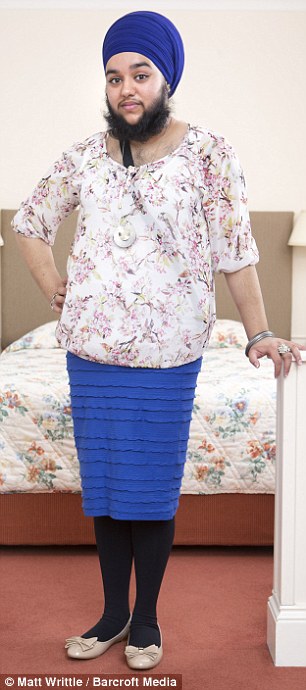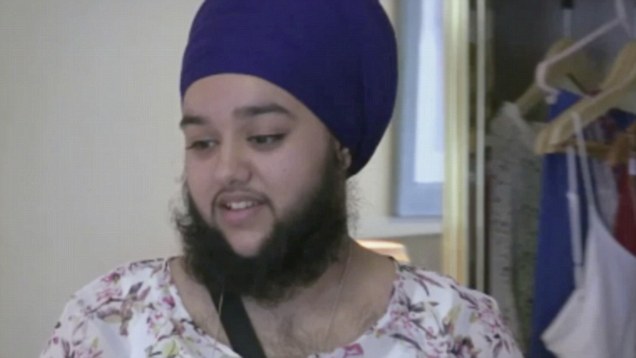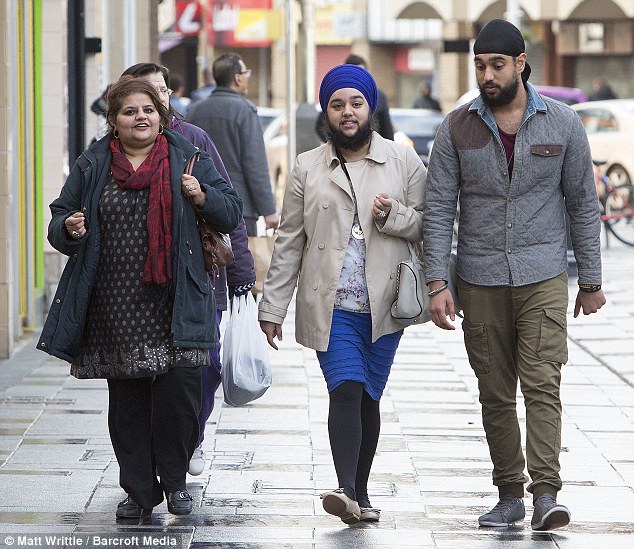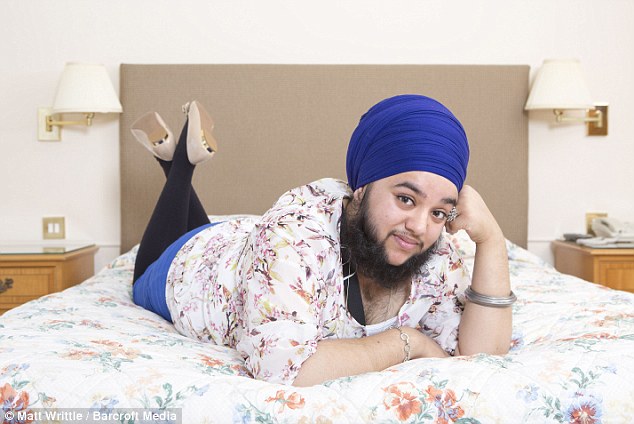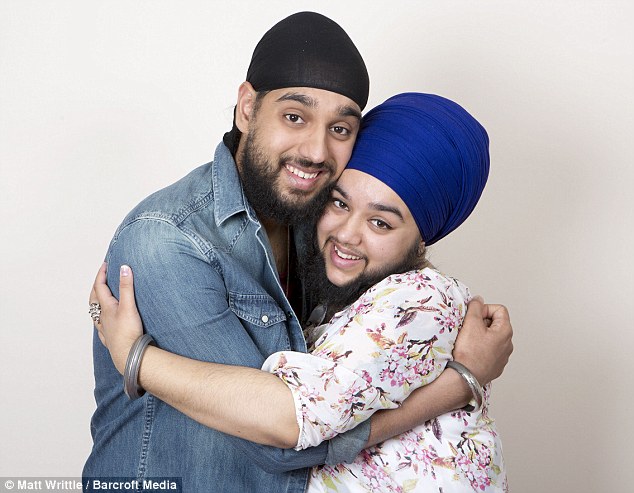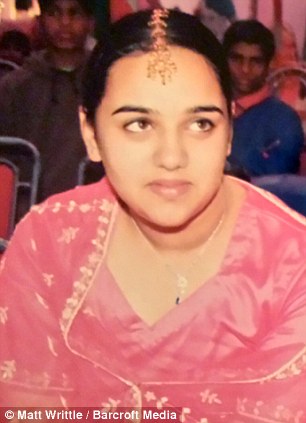JamiiForums
JF Official Account
- Nov 9, 2006
- 6,200
- 4,991
Siku za karibuni, wanawake wengi wamekuwa wakiota ndevu na wengi hawajui cha kufanya.
Katika mjadala huu, tunaangalia CHANZO cha tatizo hili, dalili zake (kama zipo), tutajadili pia tiba za asili na za kisasa (kama zipo) ili kuweza kuwasaidia wenye kuhitaji ushauri wa kukabiliana na tatizo hili.
Fuatana nasi!
==========================================================================
Katika mjadala huu, tunaangalia CHANZO cha tatizo hili, dalili zake (kama zipo), tutajadili pia tiba za asili na za kisasa (kama zipo) ili kuweza kuwasaidia wenye kuhitaji ushauri wa kukabiliana na tatizo hili.
Fuatana nasi!
==========================================================================

Advera Senzo, Msemaji wa Jeshi La Polisi Tanzania
KUOTA NDEVU AU NYWELE KWA MWANAKE, KWENYE SEHEMU AMBOZO SIO ZA KAWAIDA KWA JINSIA YA KIKE, HUJULIKANA ZAIDI KWA MAJINA MAWILI
[1] HIRSUTISM AND
[2] HYPERTRICHOSIS
HIRSUTISM is defined as the excessive growth of thick dark hair in locations where hair growth in women usually is minimal or absent or is the growth of terminal hair in female which is distributed in pattern normally seen in male. Such male-pattern growth of terminal body hair usually occurs in androgen-stimulated locations, such as the face, chest, and areolae. [Dark ring around a nipple]
HYPERTRICHOSIS;
Is an excessive growth of terminal hair that does not follow an androgen pattern,kwenye paji la uso,mikono n.k. Although the terms hirsutism and hypertrichosis often are used interchangeably, hypertrichosis actually refers to excess hair (terminal or vellus) in areas that are not predominantly androgen dependent.
Whether a patient is hirsute often is difficult to judge because hair growth varies among individual women and across ethnic groups. What is considered hirsutism in one culture may be considered typical in another. For example, women from the Mediterranean and the Indian subcontinent have more facial and body hair than do women from East Asia, sub-Saharan Africa, and northern Europe. Dark-haired, darkly pigmented individuals of either sex tend to be more hirsute than blond or fair-skinned persons.
A woman with hirsutism has excess terminal hair in a masculine pattern, but note that hirsutism may be difficult to evaluate in women who have blond hair In most cases, hirsutism is a benign condition and is primarily of cosmetic concern. However, when hirsutism is accompanied by masculinizing signs or symptoms, particularly when these arise well after puberty, hirsutism may be a manifestation of a more serious underlying disorder such as an ovarian or adrenal neoplasm. Fortunately, these disorders are rare.
Causes:
Hormones;
Androgen levels disorders of ovary is one of the causes of Polycystic ovary syndrome (PCOS) . [cyst;- a closed bladder like sack formed in animal tissues ,containing fluid or semi fluid matter] PCOS is a disorder which causes of hirsutism; (PCOS) is one of the most common female endocrine disorders affecting approximately 5%-10% of women of reproductive age (12-45 years old) and is thought to be one of the leading causes of female infertility.
[ii] Familial hirsutism
Familial hirsutism is not associated with androgen excess. Familial hirsutism is both typical and natural in certain populations, such as in some women of Mediterranean or Middle Eastern ancestry.
[iii]Drug-induced hirsutism;
Which results from the treatment of gynecological disorders such as endometriosis danazol which was popular in 1970s, Anabolic steroids; Which are commonly used for muscle-building. Currently used oral contraceptives are likely to cause Hirsutism if used in high or inappropriate dosage.
Siku hizi wanawake wengi wanaota ndevu ukilinganisha na miaka ya nyuma! Hii inasababishwa na nini?
OBVIOUS kwetu ni suala la
[1]HORMONE MARADHI KWA KINA MAMA ,KAMA UTAONA MANAMKE ANAOTA NDEVU GHAFLA ,ZIKIAMBATANA NA CHUNUSI NA HUKU KUKIWA NA MABADILIKO YA SAUTI KUTOKA YA KIKE KWENDA YA KIUME [Age 12-45 ] , BASI MSHAURI AKAPIME HORMONIES ,PIA APIGE NA ULTRA SOUND HIZO NI DALILI ZA PCOS .
[2] VIDONGE VYA MAJIRA AMBAVYO VINAUZWA KAMA NJUGU ,UTAKUTA MSICHANA MDOGO ANAIGIA FAMASI NA KUSEMA,NAOMBA MAJIRA MBILI NA ANAPATIWA BILA TAABU WALA MAELEZO.
[3] INDIRECT HORMONE USAGE ,KUTOKA KWENYE VYAKULA.

Ingawa upara si kawaida sana katika wanawake kama ilivyo kwa wanaume, athari za kisaikolojia za kupoteza nywele huwa kubwa zaidi. Kwa kawaida ukanda wa nywele za mbele hudumu ilhali uwingi wa nywele hupungua katika maeneo yote kichwani.
Hapo awali iliaminika kuwa ilisababishwa na testosteroni sawa na katika upara wa kiume, lakini wanawake wengi ambao kupoteza nywele huwa na viwango vya kawaida vya testosteroni .
Hata hivyo, upotezaji nywele kwa mwanamke umekuwa tatizo linaloendelea, ambalo kwa mujibu wa Akademia ya Marekani ya Matibabu ya ngozi, huathiri karibu wanawake 30,000,000nchini Marekani.
Ingawa upotezaji nywele kwa wanawake kwa kawaida hutokea baada ya umri wa miaka 50 au hata baadaye, isipoambatana na matukio kama ujauzito, maradhi sugu, ya mlo, na mfadhaiko kati ya nyinginezo, kwa sasa inatokea miaka ya mapema na huku ripoti zikionyesha kuwa hutokea hata wanawake wachanga kama wa miaka 15 au 16.
Sababu za upotevu wa nywele mingoni mwa wanawake zinaweza kutofautiana na zinazoathiri wanaume. Kuhusiana na alopeshia androjeni, upotevu wa nywele za wanawake hutokea kulingana na athari za homoni za androjeni (testosteroni, androsteinedioni, na dihaidrotestosteroni (DHT)).
Homoni hizi za kiume, kwa kawaida hutokea kwa kiasi kidogo kwa wanawake. Hata hivyo, kulingana na Ted Daly, MD, tabibu wa ngozi kutoka Kituo cha Matibabu cha Chuo Kikuu cha Long Island, alopeshia androjeni sio sababu kuu ya kupotea kwa nywele kwa wanawake na wataalamu wa ngozi kwa sasa hupendelea kuita hali hii mkondo wa upotevu wa nywele.
Kwa wanawake badala ya kutumia neno androjeni alopeshia. Anaongeza kuwa mkondo wa kike ni wa mtawanyiko na hudhihirika katika eneo lote la juu ya kichwa na waweza kuathiri wanawake wakati wowote.
Wakati mwingine pia mchakato wa homoni huweza kusababisha upotevu wa nywele kwa mwanamke. Baadhi ya mifano ni: uja uzito, kufikia kutoweza kuzaa, uwepo wa uvimbe wa ovari, dawa za kudhibiti upataji mimba na kiwango juu cha androjeni , dalili za vimbe nyingi za ovari.
Pia matatizo ya tezi , anemia, ugonjwa sugu na baadhi ya dawa husababisha upotevu wa nywele kwa mwanamke
Dawa utaweza kwenda London kwenye clinic Harley Street Hair Clinic aliyotibiwa Rooney.
Credit: Katulanda
Testosterone ndo inaregulate mtu kuwa mwanaume mf masculinization, upara, ndevu, sauti etc. The vice versa unakuwa mwanamke.
Any imbalance kwenye hiyo hormone mtu anakuwa na vitu visivyo vya jinsia yake. Mf. Semenya alikuwa na ectopic production ya testosterone kutoka ndani ya via vya uzazi ndo mana akawa vile.
Walichomfanyia ni kusupress production yake ndo maana siku hizi anaonekana yuko feminized. Mabadiliko ya kimazingira, genetics, dawa, magonjwa huchangia kuwa na low au high levels za hiyo hormone.
Wapo wanawake wenye ndevu za kuzaliwa nazo na hawa si mjadala hapa.
Wanawake ninaowazungumzia ni wale nguli wa matumizi ya vipodozi.

Katika study case yangu ndogo niliyoifanya Dar es Salaam katika usafiri wa daladala hasa miaka ya 2007 mpaka 2009 nilikuja kugundua wanawake wengi walioonekana wana ndevu walikuwa na ngozi iliyotiwa mkorogo (cream) tena ikiwa imeharibika,weupe si weupe,wekundu si wekundu.
Ni ajabu kuwa karibu kila siku nilikutana na hawa watu katika daladala tofauti tofauti.
Katika hali ya kawaida ni ngumu sana kukutana na mwanamke mwenye ndevu za kuzaliwa nazo lakini ni jambo jepesi kumuona mwanamke anaetumia mkorogo aliyeota ndevu ukubwani kwa sababu ya mikorogo.
LADIES siyo kila kitu kwenye urembo kinafaa,take care na matumizi ya mikorogo.NGOZI YENU NI BORA KULIKO ILE YA MKOROGO,ngozi yenu inazuia mionzi ya jua kuwasababishia kansa,ngozi yenu inadumu miaka na miaka.
KWA WALE WANYONYESHAO WATOTO WAO WANANYONYA SUMU ZA COSMETICS ZENU ZINAZOTIRIRIKA KAMA JASHO MPAKA KWENYE MATITII.
Stop this.



